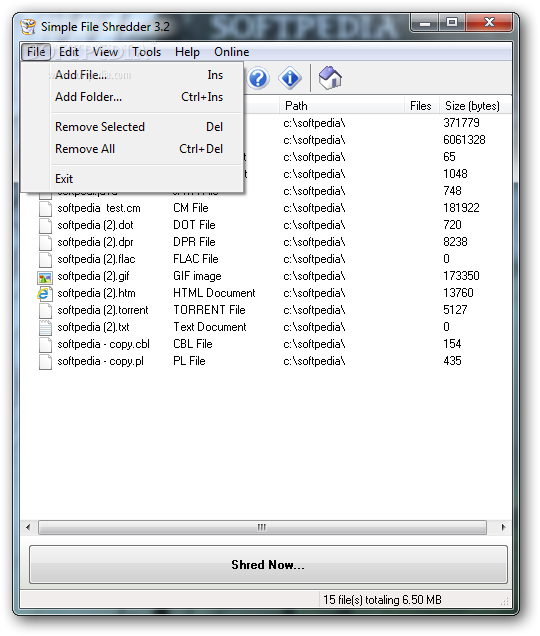

#Easy file shredder free
With that said, several free file shredders are ideal for private use.
#Easy file shredder software
We don’t use commercial software for secure file deletion. If we need to destroy a single file while keeping the media intact, we use proprietary tools built to meet DoD/NIST standards. When we need to eliminate sensitive data, we usually degauss the hard drive by using powerful electromagnetic fields. Why? Put simply, software (and users) aren’t perfect. Even with a single pass, data recovery is extremely unlikely, especially for larger files.Įven so, we do not officially recommend any file shredder applications, and we don’t use them frequently in our laboratories. Some tools follow the Department of Defense’s (DoD) standards, overwriting the target area up to 7 times to completely annihilate the data.īut do they work? Yes - data recovery technicians have theorized that a single overwrite (or one pass deletion) could be recovered, but multiple overwrites eliminate any magnetic artifacts that would allow file recovery.

Many “file shredder” tools go even further, writing random 1s and 0s to the space occupied by the target file. It’s an intensive process, and it works - provided you’ve selected a decent application for the task. How File Deletion Software Worksįile deletion software actually goes through the process of changing the magnetic charges on the hard drive’s platters. Note that this is only true for magnetic media - solid state drives (SSDs) don’t use magnetic charges to store data, and deleting a file from an SSD will immediately destroy the target file. You’re simply putting a “VACANT” sign on the file’s address. To put that another way, deleting a file doesn’t actually delete anything. If you’re deleting a 2-gigabyte application, it doesn’t make sense to spend resources overwriting every bit of data - instead, the operating system will simply mark the space that the data occupied as “deleted,” then use that space when it needs to execute another write operation. The hard drive’s actuator heads must visit every sector of the file, which causes mechanical stress and limits the computer’s processing power until the operation is complete. Writing data (i.e., changing the magnetic charges) consumes energy and takes time. To actually delete a file, you’d need to change all of the magnetic charges associated with that file.īut in most cases, that’s unnecessary. Hard drives store data on platters, which are coated with a thin magnetic material. Unfortunately - or fortunately, depending on your perspective - OS tools don’t always overwrite data. Of course, every operating system has “file deletion” software on Windows, for example, you’ve got the Recycle Bin. On many operating systems, deleted files are fully recoverable They’re effective, easy to use, and much safer than the aforementioned drilling method (to be clear, we’d put down the drill, since hard drive platters can break into sharp fragments).

Physical media destruction is always an option, but if you’re not willing to disassemble your hard drive and drill holes through the platters, file deletion software (or “file shredders”) are the next-best option. You want to make sure that no one - not even ’s engineering team - can restore the target files. You’ve got sensitive data that you want to destroy, and you want to be extremely thorough.


 0 kommentar(er)
0 kommentar(er)
